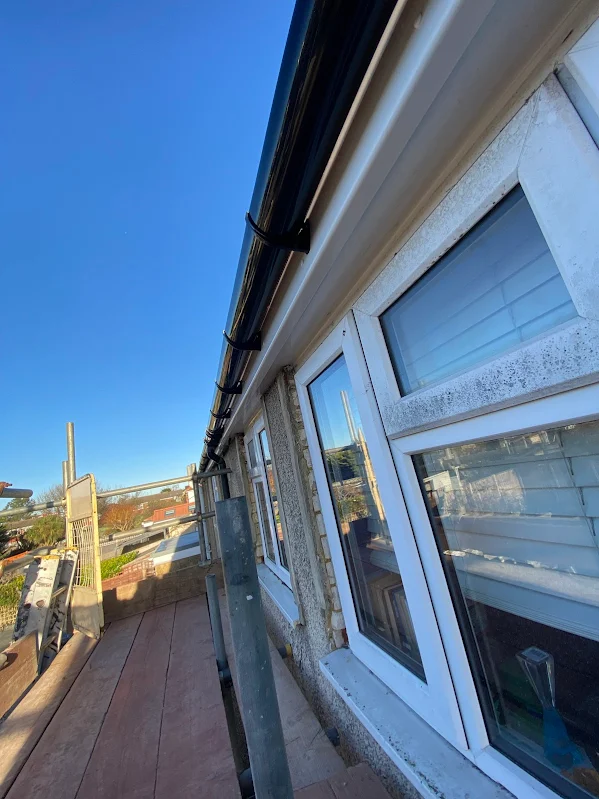+44 7853 968135
Are chimney repairs covered by house insurance?
Understanding whether your home insurance covers chimney repairs can save you thousands of pounds when unexpected damage occurs. Most UK homeowners discover too late that their insurance policy may not cover all types of chimney damage, leaving them facing substantial repair bills.
The complexity of chimney insurance coverage often catches property owners off guard, particularly when dealing with structural issues, weather damage, or maintenance-related problems. This comprehensive guide examines exactly what circumstances trigger insurance coverage for chimney repairs and when you might need to pay for repairs yourself.
Does House Insurance Cover Chimney Repair?
Standard UK home insurance policies typically cover chimney repairs only when the damage results from specific perils explicitly listed in your policy terms. Common covered scenarios include storm damage, fire damage, vandalism, or impact from falling objects like trees or aircraft.
However, the devil lies in the detail of your individual policy wording. Insurers often exclude damage caused by gradual deterioration, wear and tear, or lack of maintenance, which unfortunately encompasses many common chimney problems including mortar degradation, pointing failure, and structural settling over time.
Need some Support with your chimney Repairs? Speak with a member of our Professional Chimney Repairs Team here

Understanding Liability for Party Wall Chimney Repairs
When your chimney sits on a party wall shared with neighbours, determining repair liability becomes significantly more complex under UK property law. The Party Wall Act 1996 provides the legal framework for such situations, typically making both property owners jointly responsible for maintenance costs.
Property deeds and lease agreements often contain specific clauses regarding shared chimney maintenance responsibilities. In most cases, each neighbour bears responsibility for their portion of repairs, though this can vary depending on the original construction arrangement and any subsequent legal agreements between the properties.
Typical Costs for Chimney Repair Work
| Repair Type | Average Cost Range | Insurance Coverage Likelihood |
|---|---|---|
| Repointing | £300 – £1,500 | Low (maintenance) |
| Flashing repair | £200 – £800 | Medium (weather dependent) |
| Chimney rebuild | £1,000 – £4,000 | High (if storm damaged) |
| Crown repair | £400 – £1,200 | Medium (cause dependent) |
| Liner replacement | £500 – £2,000 | Low (wear and tear) |
Chimney repair costs vary dramatically depending on the extent of damage, accessibility, and regional labour rates across the UK. Simple repointing jobs might cost a few hundred pounds, whilst complete chimney reconstruction can reach several thousand pounds, particularly for period properties requiring specialist heritage materials.
The height and accessibility of your chimney significantly impact labour costs, as scaffolding or specialist access equipment adds substantial expense to any repair project. Always obtain multiple quotes from qualified chimney specialists who can assess whether the damage might qualify for insurance coverage before commencing work.
Insurance Validity and Chimney Sweeping Requirements
Most UK home insurance policies do not explicitly require annual chimney sweeping to maintain coverage validity. However, insurers may dispute claims if they can demonstrate that lack of maintenance contributed to the damage, particularly in cases involving chimney fires or structural problems.
Regular chimney maintenance creates a paper trail demonstrating responsible property ownership, which can strengthen your position when making insurance claims. The Health and Safety Executive guidelines recommend annual professional cleaning for regularly used chimneys, and maintaining these records provides valuable evidence of proper maintenance practices.
Storm Damage and Weather-Related Coverage
| Weather Event | Coverage Probability | Typical Policy Response |
|---|---|---|
| Storm damage (winds >55mph) | High | Usually covered |
| Frost damage | Low | Often excluded |
| Lightning strikes | High | Standard coverage |
| Flooding impact | Medium | Depends on flood cover |
| Snow loading | Medium | Structural policy dependent |
Weather-related chimney damage represents one of the most common successful insurance claims for UK homeowners. Insurers typically define storms as weather events with wind speeds exceeding 55mph, and damage from such conditions usually falls within standard policy coverage.
However, gradual weather deterioration over time rarely qualifies for coverage, even when the final failure appears sudden. Insurers often investigate whether previous damage or maintenance issues contributed to the problem, potentially reducing or denying claims where pre-existing conditions existed.
Making Successful Chimney Insurance Claims
When chimney damage occurs, immediate documentation proves crucial for successful insurance claims. Photograph the damage from multiple angles, noting the date and circumstances, whilst taking care not to access dangerous areas without proper safety equipment.
Contact your insurer promptly to report the damage, but avoid admitting fault or speculating about causes during initial conversations. Professional assessments from qualified chimney specialists or structural engineers can provide the technical evidence needed to support your claim, particularly for complex structural issues.
The Building Regulations guidance provides technical standards that can support your case when insurers question repair specifications. Understanding your policy’s excess amounts and any betterment clauses helps set realistic expectations about potential claim settlements.
Navigating Chimney Insurance Coverage Successfully
Understanding your chimney insurance coverage requires careful examination of policy documents and realistic expectations about what qualifies for claims. Most successful claims involve sudden, identifiable damage from covered perils rather than gradual deterioration or maintenance issues.
Proactive maintenance, proper documentation, and professional assessments create the foundation for successful insurance claims when genuine covered damage occurs. Regular professional inspections can identify potential problems before they become major issues, potentially saving thousands in repair costs.
Consider these essential points when dealing with chimney insurance matters:
Need Help with Chimney Repairs? Talk to one of our Professional Chimney Repairs Experts today!
Are Chimney Repairs Covered by House Insurance: Frequently Asked Questions
Storm damage, fire damage, vandalism, and impact from falling objects usually qualify for coverage under standard UK home insurance policies. Gradual deterioration, wear and tear, and maintenance-related issues are typically excluded from coverage.
Document the damage with photographs, obtain professional assessments from qualified chimney specialists, and maintain records of regular maintenance to demonstrate the damage wasn’t caused by neglect. Weather reports can support storm damage claims by confirming wind speeds exceeded policy thresholds.
Most policies don’t explicitly require annual sweeping, but insurers may dispute claims if poor maintenance contributed to the damage. Regular sweeping records strengthen your position when making claims, particularly for fire-related damage.
Party wall chimney repairs are typically shared between neighbouring property owners according to the Party Wall Act 1996 and specific property deeds. Each neighbour usually bears responsibility for their portion of maintenance and repair costs.
Frost damage is often excluded from standard home insurance policies as it’s considered gradual deterioration rather than sudden damage. However, policies vary, so check your specific terms for weather-related exclusions.
Photograph the damage safely, contact your insurer promptly to report the incident, and avoid making temporary repairs that might affect the claim assessment. Obtain professional evaluations before beginning any repair work.
Repair costs range from £200 for minor flashing work to £4,000 for complete reconstruction, depending on damage extent and property accessibility. Multiple quotes help establish reasonable repair costs for insurance purposes.
Insurance premiums may increase following claims, though this depends on your insurer’s policies and claims history. Consider whether minor repair costs exceed your excess amount before making small claims.
Listed buildings and conservation areas often require planning permission for significant chimney work, whilst most standard repairs fall under permitted development rights. Check with your local planning authority for specific requirements.
Many insurers allow you to select your preferred contractor, though they may require quotes or approve contractors beforehand. Some policies include preferred contractor networks that might streamline the claims process.
Professional inspection reports, maintenance records, weather data supporting storm claims, and clear photographic evidence of damage help substantiate claims. Independent structural engineer reports carry particular weight for complex damage assessments.
Period properties often require specialist materials and techniques for chimney repairs, which can increase costs and complicate insurance coverage. Some insurers offer specialist heritage property policies that better accommodate these requirements.
Most policies require prompt notification of damage, typically within 30 days of discovery, though this varies between insurers. Delayed reporting can potentially affect claim validity, so contact your insurer immediately upon discovering damage.
Insurers typically expect you to prevent further damage through reasonable temporary measures, but obtain approval before spending significant amounts on temporary repairs. Keep receipts for any emergency work as these costs are often recoverable under your policy.

